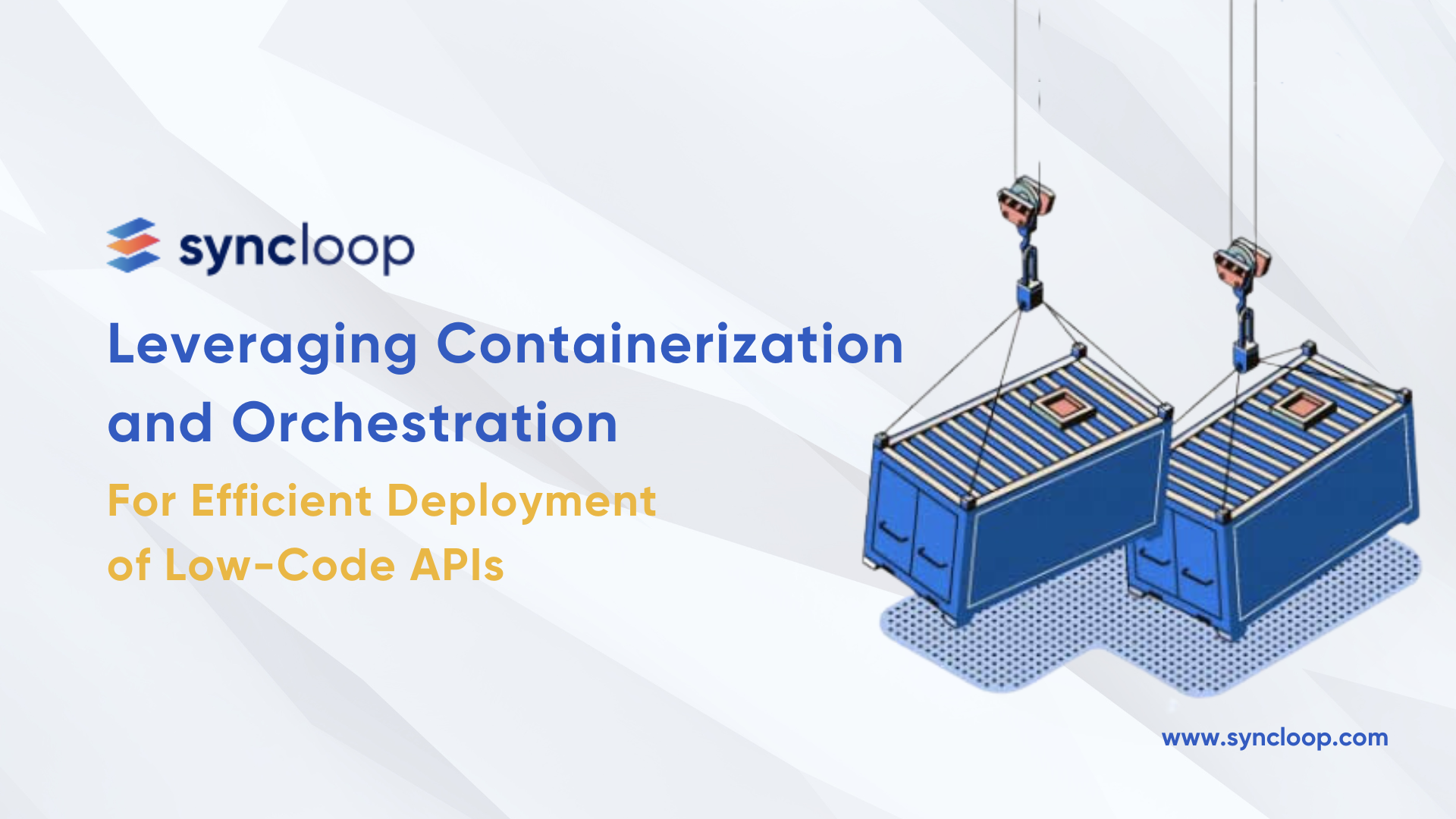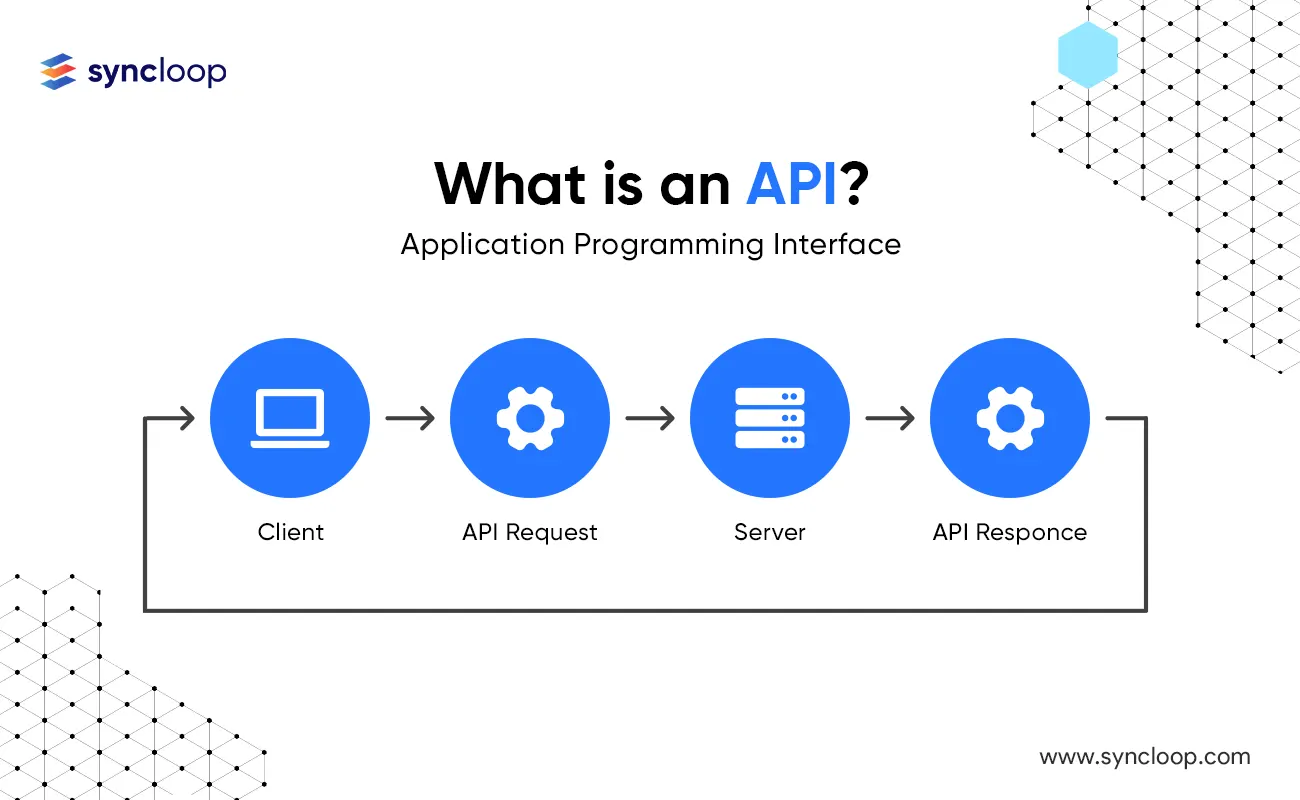Leveraging Containerization and Orchestration for Efficient Deployment of Low-Code APIs
Posted by: Deepak | April 04, 2024

Categories: Containerization, Orchestration, Kubernetes, Low Code APIs
The low-code development movement has empowered businesses to build applications faster and with less coding expertise. However, deploying these low-code applications, particularly those relying on APIs, can become a bottleneck. This is where containerization and orchestration come into play.
This blog explores how containerization and orchestration technologies can streamline the deployment and management of low-code APIs. We'll delve into the benefits, technical details, integration processes, and real-world use cases across various industries.
The Challenge: Scaling Low-Code API Deployments
Low-code platforms offer a drag-and-drop interface and pre-built components, enabling rapid API development. But traditional deployment methods like manual server configuration can become cumbersome as the number of APIs grows. Here's why:
- Environment Inconsistency: Manually configuring environments for development, testing, and production can lead to inconsistencies, causing deployment failures.
- Version Control Challenges: Managing different versions of APIs and their dependencies across environments becomes complex without proper version control mechanisms.
- Reliance on IT Teams: Developers often rely on IT teams for server provisioning and configuration, hindering agility and innovation.
Statistics show the increasing demand for agile deployments. According to a 2023 study by Gartner, 75% of large organizations will shift from traditional infrastructure management to a containerized approach by 2025.
Containerization and Orchestration: The Solution
Containerization and orchestration technologies offer a robust solution for deploying and managing low-code APIs efficiently. Let's break down these concepts:
- Containerization: A container encapsulates an application with its dependencies and configuration files, creating a standardized unit that can run consistently across different environments. Popular containerization technologies include Docker and containerd.
- Orchestration: An orchestration platform like Kubernetes manages the lifecycle of containers. It automates deployment, scaling, and networking for containerized applications, ensuring efficient resource utilization and high availability.
Here's how containerization and orchestration address the challenges mentioned earlier:
- Consistent Environments: Containers provide a consistent runtime environment, eliminating configuration discrepancies across development, testing, and production.
- Simplified Version Control: Container images encapsulate all dependencies, enabling easy version control and rollbacks if needed.
- Self-Service Deployment: Developers can leverage container registries and CI/CD pipelines for self-service deployments, increasing agility and reducing reliance on IT teams.
Latest Tools and Technologies
The containerization and orchestration landscape is constantly evolving. Here are some of the latest tools and technologies relevant for low-code API deployments:
- Kubernetes: The de facto standard for container orchestration, Kubernetes offers a powerful and flexible platform for managing containerized workloads.
- Helm: A package manager for Kubernetes that simplifies the deployment and management of containerized applications, including low-code APIs.
- Serverless Platforms: Cloud providers like AWS, Azure, and GCP offer serverless platforms that leverage containerization technologies behind the scenes. These platforms allow developers to focus on building APIs without managing underlying infrastructure.
Integration Process: Steps to Success
Integrating containerization and orchestration for low-code API deployments involves several steps:
- Containerize Low-Code APIs: Package your low-code APIs and their dependencies into Docker containers. This ensures consistent execution across environments.
- Choose an Orchestration Platform: Select a container orchestration platform like Kubernetes based on your infrastructure and team expertise.
- Configure CI/CD Pipeline: Integrate your low-code development environment with a CI/CD pipeline that automates container image building, testing, and deployment to your chosen orchestration platform.
- Monitor and Manage APIs: Utilize monitoring tools to track the health and performance of your containerized APIs. Implement automated scaling mechanisms to handle traffic fluctuations.
Benefits for Different Industries
Containerization and orchestration offer significant benefits for deploying low-code APIs across various industries:
- Financial Services: Ensures secure and compliant deployments of APIs handling sensitive financial data.
- Healthcare: Facilitates rapid and scalable deployment of APIs for healthcare applications, improving patient care delivery.
- Retail: Enables faster time-to-market for new e-commerce features and functionalities built with low-code APIs.
Syncloop: A Powerful Low-Code API Development Platform
Syncloop is a low code API development platform with Built-in Containerization
While containerization and orchestration are powerful tools for managing low-code API deployments, integrating them can add complexity. Syncloop, a next-generation low-code API development platform, addresses this challenge by offering a seamless containerization experience.
Here's how Syncloop checks all the boxes for efficient deployment of low-code APIs:
- Built-in Containerization: Syncloop utilizes containerization technologies under the hood, eliminating the need for manual container creation and configuration. This simplifies the development process for low-code users.
- Automatic Orchestration: Syncloop manages the deployment and lifecycle of containerized APIs, ensuring high availability and scalability. Developers don't need to worry about setting up and maintaining a separate orchestration platform.
- CI/CD Integration: Syncloop integrates seamlessly with popular CI/CD pipelines, enabling automated deployments of low-code APIs from development to production environments.
- Cloud-Native Architecture: Syncloop is built on a cloud-native architecture, leveraging the scalability and elasticity of cloud platforms. This allows for efficient resource utilization and cost optimization.
By combining the power of low-code development with built-in containerization and orchestration, Syncloop empowers businesses to:
- Deploy APIs Faster: Eliminate the complexity of managing containerization and orchestration, allowing for quicker deployments of low-code APIs.
- Reduce Costs: Streamline the deployment process and optimize resource utilization, leading to cost savings on infrastructure.
- Increase Developer Productivity: Low-code development combined with automated deployments frees developers to focus on building innovative API functionalities.
Conclusion
Containerization and orchestration technologies offer a compelling solution for efficient deployment and management of low-code APIs. By leveraging these technologies, businesses can achieve faster time-to-market, improved scalability, and reduced costs. Syncloop, with its built-in containerization and orchestration capabilities, stands out as a powerful low-code API development platform that simplifies the entire development and deployment lifecycle for businesses of all sizes.
Incorporating containerization and orchestration into your low-code development strategy can unlock the full potential of low-code APIs. By choosing the right tools and following best practices, you can ensure secure, scalable, and efficient deployments of your low-code API creations.
Back to Blogs

